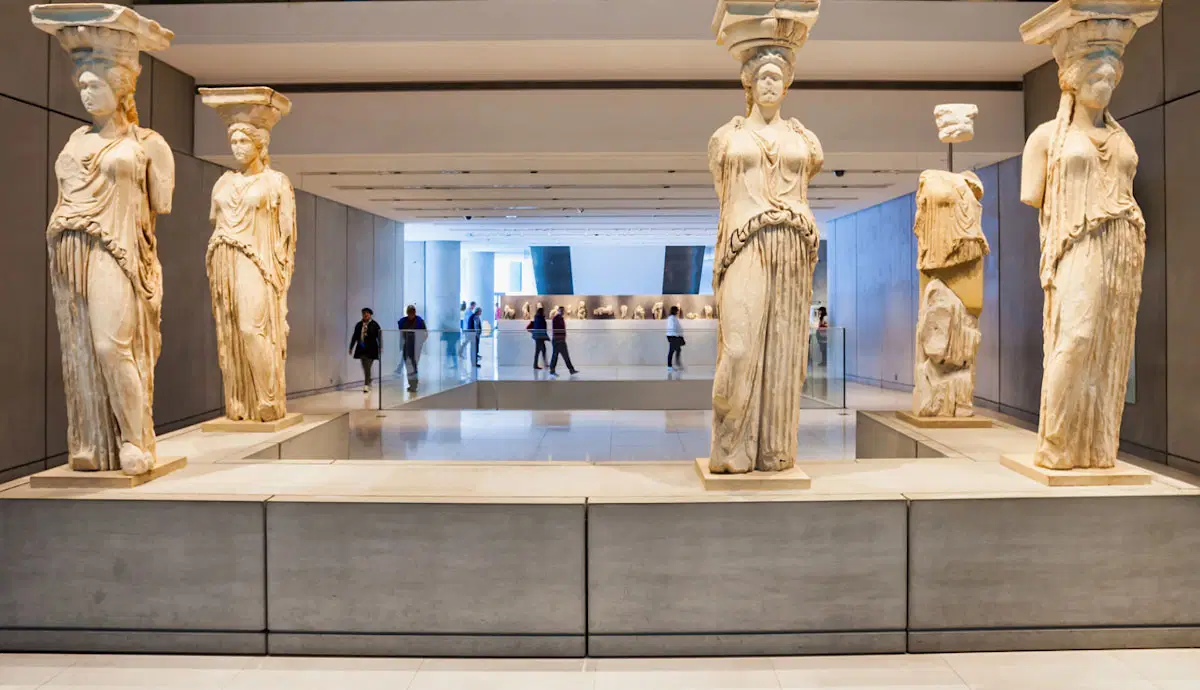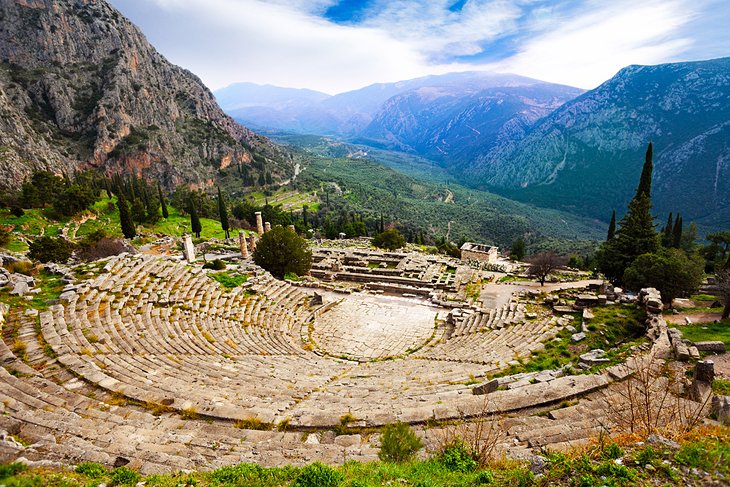Acropolis Museum

The Acropolis Museum, also known as Mouseio Akropolis (Greek: Μoυσείο Ακρόπολης), is an archaeological museum that focuses on the discoveries made at the Acropolis of Athens. From the Greek Bronze Age to Roman and Byzantine Greece, the museum was constructed to house every relic discovered on the rock and on the nearby slopes. Additionally, the remains of a portion of Roman and early Byzantine Athens are situated above the Acropolis Museum.
The museum was founded in 2003, and the institution's organization was created in 2008. On June 20, 2009, it became publicly accessible.The display spans 14,000 square meters and includes approximately 4,250 items.The Acropolis was home to the first museum, which was finished in 1874 and expanded somewhat in the 1950s. However, successive excavations on the Acropolis uncovered many new artifacts which significantly exceeded its original capacity. When the Greeks requested the repatriation of the Elgin Marbles from the British Museum in the 20th century, museum officials stated that Greece lacked a proper place to show them. This was another reason for building a new museum. In all previous plans for the design of a new museum, the creation of a gallery for the display of the Parthenon Marbles has been central.In the fourth competition, Bernard Tschumi's design was chosen as the winner. Three ideas were central to Tschumi's design: movement, light, and a programmatic and tectonic component.
Three floors display the museum's holdings, and a fourth center level has auxiliary areas like the offices, café, and museum store. The results of the Acropolis' slopes are displayed on the museum's first floor. The floor of the long, rectangular hall slopes upward, like the rock's ascent. The archaic discoveries are housed in a huge trapezoidal hall that follows the hall.
One of the most popular tourist destinations in Athens is the Acropolis Museum. Built especially to showcase ancient artifacts from the Acropolis, the ultra-modern glass and steel building was designed by Swiss architect Bernard Tschumi and features light-filled, spacious exhibition areas.
Top attractions include the highly contentious Parthenon marbles, the Caryatids (sculptures of female figures supporting the Erechtheion), and the Moschophoros (statue of a young man with a calf on his shoulders) from the sixth century BC. You may take in breathtaking views of the Acropolis itself from the cafe-restaurant terrace of the museum.To replicate the ancient temple on the Acropolis' cardinal orientation, the Museum's top floor is asymmetrical relative to the lower levels. The Parthenon hall's column spacing is identical to that of the ancient temple, and the Parthenon marbles are illuminated by natural light thanks to the glass walls on all four of its outer walls. In contrast to the Parthenon marbles, which are shown facing inward in the Duveen Gallery of the British Museum, the pediments, metopes, and frieze are shown facing outward, just as they were on the Parthenon.The Parthenon hall's 48 columns serve as a colonnade for the Parthenon marbles' exposition and delineate the layout of the historic temple. The metopes are positioned on the columns, two per column, but not as high as in the ancient temple, and the frieze are positioned behind the metopes, creating a continuous band around the walls of a rectangular space set inside the columns, as in the ancient temple but not as high, again for ease of viewing. The pediment marbles are positioned at eye level in front of the end columns. The ancient temple atop the Acropolis is seen from the north side of the Parthenon hall.Some sections of the museum's floor are made of glass to let visitors see the excavations below because it is situated on top of a sizable archeological site. The museum courtyard provides public access to a portion of this facility. The museum also features a space for temporary exhibitions, a virtual theater, and an amphitheater.It takes roughly twenty to twenty-five minutes to walk from Syntagma Square, the heart of Athens, to the Acropolis via Ermou Street and Dionysiou Areopagitou. Another option is to take the metro's Line 2 (the red line) from Syntagma, which takes roughly five minutes to get to the "Acropoli" station.The display of the Parthenon's frieze and pediments in a specifically designated gallery marks the conclusion of the exposition of the abundance and diversity of architectural sculptures and offerings from the Archaic era, including the well-known "Kores and Ippeis" (Girls and Horsemen).
By Admin
21 May 2025
.jpeg)




